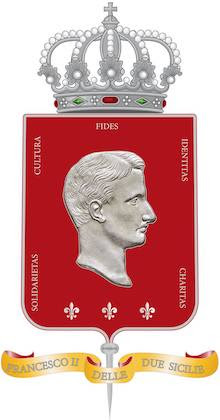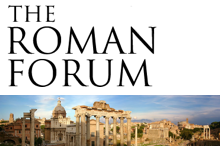“L’invasione giacobina” di Silvio Vitale was translated with permission from L’Alfiere: Pubblicazione Napoletana Tradizionalista, Numero Uno, Gennaio, 1961, pp. 3-7.
Part 1, Part 3, Part 4
Attracted by the fame that had spread throughout Europe of the beauty of the region and the mildness of its climate, many foreigners arrived by sea or via the road through Terracina—clogged with coaches, carriages, and carts—heading for Naples. The English predominated among these tourists, who added commercial ambitions to the pleasures of travel, aiming to establish useful ties for the English monarchy and its Masonic support (12). The local people looked upon these foreigners with cordial and amazed curiosity, without the slightest inkling that these same visitors were preparing, through what we would now call social messaging, the groundwork to destabilize an order they considered immutable.
Indeed, Freemasonry had spread in Naples more than elsewhere in Italy (13), and the papal bull of condemnation by Benedict XIV in 1751, soon followed by a decree of suppression from Charles III, had been of no effect. Founded in England and aligned with the Hanoverians, introduced into France through the supporters of the Stuarts, it had borrowed traditional myths and formulas, distorting much of their content. Proclaiming vague ideas of brotherhood, liberty, and struggle against superstition in an equally suggestive and cautious tone, Freemasonry had managed to turn a petty criminal like Franklin into a statesman of the American Revolution. It had plunged the French nobility into a fantastic urge toward self-destruction, and both the bourgeoisie and the people into a frenzied race for power (14). The Neapolitan lodges initially took their cue from the English ones, later aligning themselves with the French, becoming dependent on both.
Independent of direct Masonic influence, Enlightenment ideas had already influenced the policies of the Kings of Naples. Charles III had persistently pursued administrative centralization in conflict with the barons and had emphasized state superiority over ecclesiastical power and wealth. Ferdinand IV continued along the same path, both supported in this by the intellectual culture of the time, from Giannone to Filangieri to Pagano. Eleonora de Fonseca Pimentel (who would later become the fiery voice of the Monitore Napoletano in 1799) wrote an epithalamium in 1768, for the wedding of Ferdinand IV to Maria Carolina—praised later by Metastasio—in honor of the Bourbons. This episode is quite illustrative of the non-antagonistic relationship between throne and intellectuals, and in our view, does not cast Pimentel in a contradictory light. Even if she later betrayed her King, she had intended to praise in the enlightened monarch the very Enlightenment principles that would eventually give rise to the Neapolitan Republic.
The French Revolution threw Queen Maria Carolina into deep despair and King Ferdinand into justified suspicion.
When, in 1792, the French Republic was proclaimed, a French fleet under Admiral La Touche arrived at the port of Naples to request the Kingdom’s neutrality in European affairs. Needless to say, by then, King Ferdinand, having understood where certain doctrines led, had wisely distanced himself from the intellectuals. The books of Filangieri, Pagano, and others were banned and burned; ties with the Pope and clergy were reinforced; Italian princes were invited to form a defensive league against the revolution; the police were strengthened; streets were named and numbered to facilitate surveillance; and suspected traitors were imprisoned (15). The Jacobins had printed the French Declaration of the Rights of Man, but frightened by their own boldness, they ended up dumping the precious documents among the rocks at Chiatamone in two plain flour sacks (16).
Patriots of Naples rushed to La Touche’s ships to celebrate the foreigner who, for his part, threatened to bombard the city. They claimed to be haters of tyranny, secret conspirators (now absurdly open) aiming to establish a reign of equality. They pinned red cockades to their chests—an unusual but now familiar sight, as Colletta recounts. They also sang hymns to Ankarström, assassin of Gustav III of Sweden—something Colletta omits but other sources confirm (17)—casting these revolutionaries in a far more threatening and less idealistic light. According to histories, the Circolo del Romo, of which many reformers were members, had already planned to eliminate the monarchy. Naturally, this was enough to land them in prison, and so the patriots ended up there. To save their lives, they began denouncing one another, so that of the 53 accused, judged by the State Junta a few years later in 1794, only three were executed—and of these only one, the very young Emanuele De Deo, steadfastly and nobly met his end.
With the departure of the French ships, the need to arm, not just defensively, was felt more than ever. The King of Naples allied with England and planned to attack France.
But the Kingdom of Naples was preparing to face new times without a tradition of national military strength, and could not have had one, as the profession of arms had been reserved for nobles for centuries. In the end, they had become courtiers and abandoned military preparations entirely. Those among the common people who had followed nobles into battle had done so out of vocation, but the vast majority had remained outside of conflicts, not seeing in risk a path to spiritual elevation. Peasants believed rightly that they were born to till the soil, not to fight; urban lazzari to live freely under the sun, not to fight; small merchants to trade without ambition; and clergy to take part in both great disputes and the affairs of the faithful. The existing militias were composed of foreign mercenaries.
What was now needed were regular armies: nobles who would once again take up arms, peasants, lazzari, and townsfolk who would learn to do the same, and priests who would become champions of audacity—all united around the King in the name of a crusade which, because it included every class, took on a new, modern character. Under such circumstances, what could be done was done, and when the fortress of Toulon rose against the French Republic in 1793, the Neapolitan fleet and newly-formed army were ready to set sail and occupy the French city. One could therefore say that while the French revolutionaries imposed the Neapolitan Republic in 1799, the Neapolitan reactionaries had already, and bravely, set foot in France in 1793. Continue reading
Footnotes:
(12) Fay, B.: La massoneria e la rivoluzione intellettuale del sec. XVIII
(13) Rosi, M.: L’Italia odierna, Vol. I, UTET ed.
(14) Fay, B.: Ibid.
(15) Rosi, M.: Ibid.
(16) Colletta, P.: Storia del Reame di Napoli
(17) Rossi, M.: Nuova luce dei fratti avvenuti in Napoli pochi anni prima del 1799










